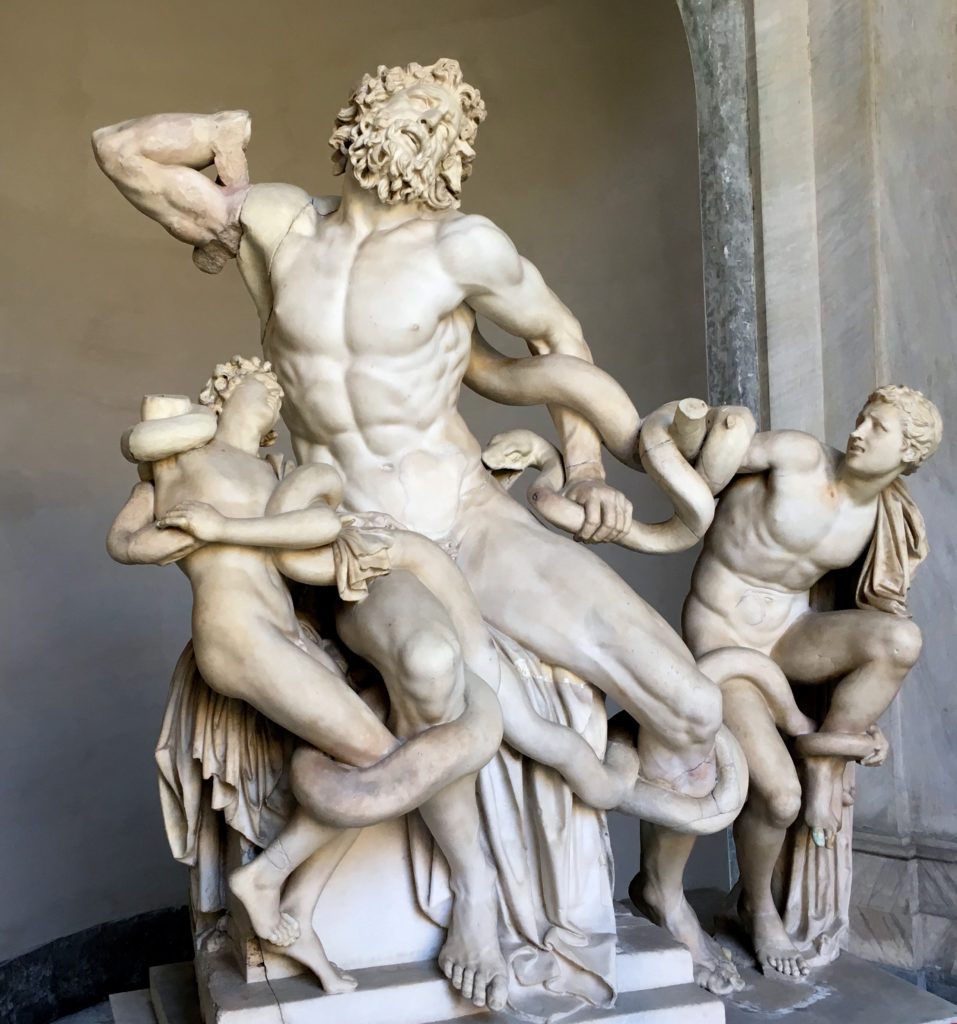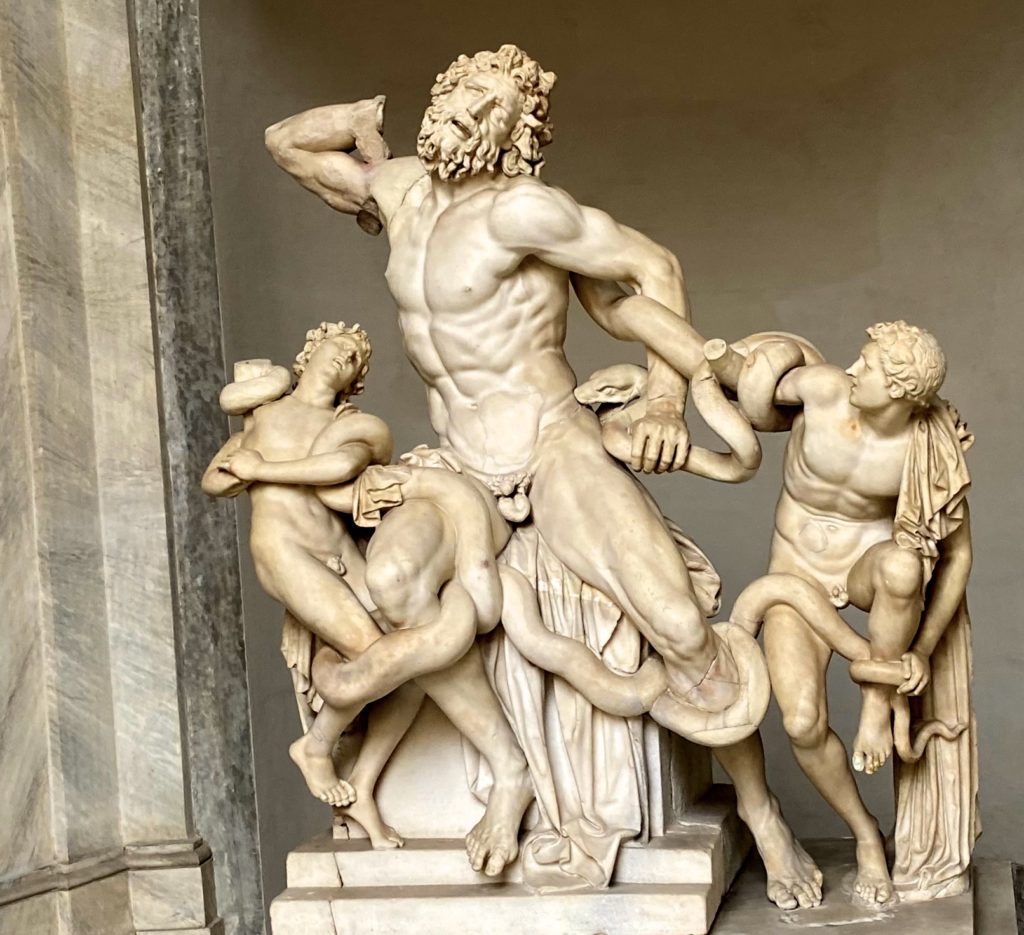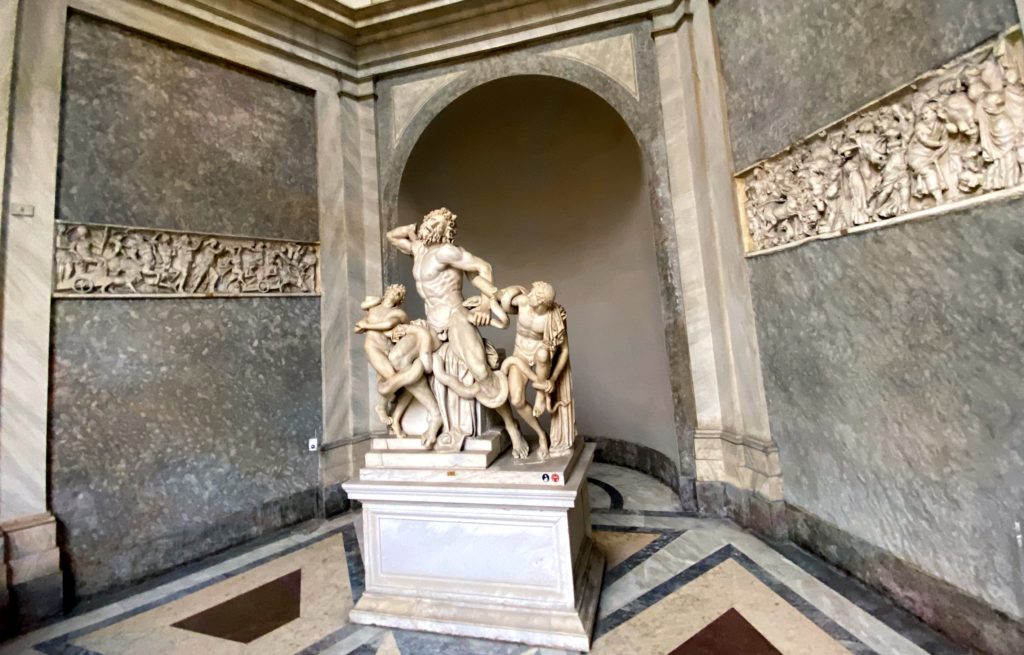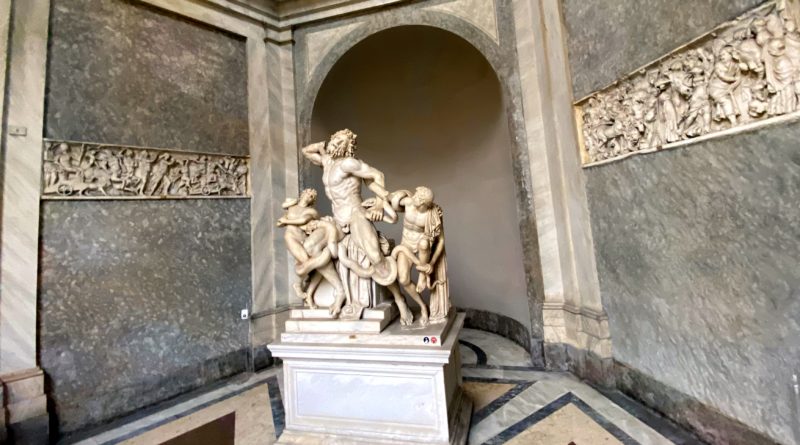LAOCOON and his sons / Vatican Museum
During the Trojan War, Laocoon, a priest of Apollo in the city of Troy, warned his fellow Trojans against taking in the wooden horse left by the Greeks outside the city gates.
He warned the Trojans to not accept the Greek wooden horse and inserted his spear into one side of the Trojan horse to see if it was empty. In order to prevent Laocoon to discover the Greeks inside the horse, Poseidon and Athena sent immediately two sea-serpents who killed him and his sons (Antiphantes and Thymbraeus)

From the Roman point of view, the death of these innocents was crucial to the decision of Aeneas, who heeded Laocoon’s warning, to flee Troy, and this led to the eventual founding of Rome.
Do you believe the enemy have sailed away? Or think that any Grecian gifts are free of craft? Is this the way Ulysses acts? Either Achaeans hide, shut in this wood, or else this is an engine built against our walls…
Do not trust the Horse, Trojans
Whatever it is, I fear the Greeks even bearing gifts.
At the same time, he stretched forth to tear the knots with his hands
his fillets soaked with saliva and black venom
at the same time he lifted to heaven horrendous cries:
like the bellowing when a wounded bull has fled from the altar
and has shaken the ill-aimed axe from its neck.
from Virgil The Aeneid

This marble statue group is a Hellenistic style artwork which is also called Pergamene baroque which arose in Asia Minor (Pergamum) in 2nd century B.C. The Hellenistic original was probably bronze.
Found in 1506 on the Esquiline Hill in Rome and immediately identified as the Laocoön described by Pliny the Elder as a masterpiece of the sculptors of Rhodes. Hagesander, Athenodoros and Polydorus.

As an important and very beautiful marble sculpture could not escape the notice of Pope Julius II (1503-1513) who bought it immediately and had it displayed in the Statues Courtyard (Cortile delle Statue), making it the centrepiece of the collection. There has been much debate over the date of the statue, which would seem to have been made around 40-30 B.C.

